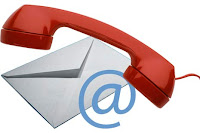THE DIFFERENCE BETWEEN GOOD AND BAD EMAILS
Emails can be used for various reasons. They can be used for answering questions, writing to customers, delegating responsibilities and filing incident reports. To write good routine emails, you should know the differences between them.
Here is a list of 4 routine emails you may find yourself writing.
1. Request messages: This is a message you send which requires a response.
Normally this message uses the direct approach with direct openings Tell the reader what you want immediately. In the body of your email you will have the reasons why you are making the request.
Close off with a date and when the reply is needed. If your request requires persuasion, use the indirect approach. The indirect approach has the request in the body of the email, after the opening statements. Using the "you" approach is a good technique when you need to persuade. The 'you' technique explains to the reader how they will benefit if they help you .
2. Response messages: This is a return message for someone else's request.
In your opening statement acknowledge to the reader you will be responding.
In the body summarize, your responses and give the details of your responses.
Close with an offering of any further assistance.
3. Procedural messages: This is to explain procedures and to give proper instruction.
Begin your sentence with an active verb to command an action. For example, "Write a job description rather than, "You should write a job description." (Guffey, Rhodes, Rogin, 2008, pg. 219)
Your email body must be written clearly be readable and understandable.
It needs to be proficient and efficient without being too dictatorial.
The closing line should have the contact details for the contact person on this procedure to direct your questions or comments.
4. Confirmation messages: This creates a written record and you are able to file information.
Open with a statement outlining your previous conversations with dates.
In the body of the email precisely list your topics.
The closing statement should request feedback if anything is unclear.






